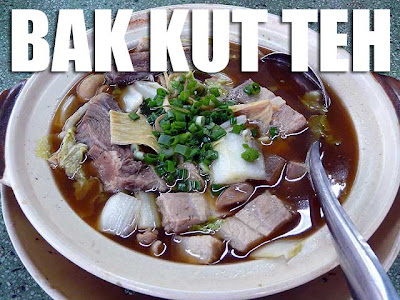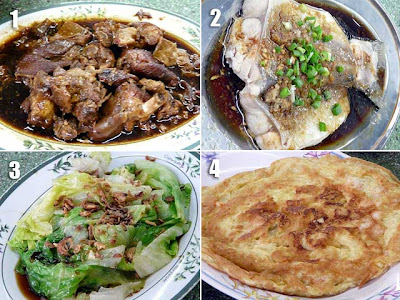 Coron, Busuanga and Culion, together with Linapacan and over a hundred more smaller islands comprise the Calamianes Islands of Palawan. You may have overlooked Busuanga as a holiday destination but take note, there are tons of things to do in the area. Here are 10 of the many reasons for you to plan a trip to the Calamianes.
Coron, Busuanga and Culion, together with Linapacan and over a hundred more smaller islands comprise the Calamianes Islands of Palawan. You may have overlooked Busuanga as a holiday destination but take note, there are tons of things to do in the area. Here are 10 of the many reasons for you to plan a trip to the Calamianes. 1. Swim in Cayangan Lake, Twin Lagoon or Barracuda Lake
1. Swim in Cayangan Lake, Twin Lagoon or Barracuda LakeThree of the many lakes on Coron Island are favorites among tourists, part of the usual Coron Loop boat rides. These lakes are where salt and fresh water are said to mix. Cayangan Lake is said to be one of the cleanest freshwater lakes in the country. It's a fifteen minute climb up and down from the jump-off point. Barracuda Lake is a short but rocky climb, only for the adventurous. Twin Lagoon is easily accessible by boat. Dare to swim through the underwater tunnel to the other lake that cannot be reached by boat. Entrance fee to Cayangan Lake is Php200 and Php100 each for Twin Lagoon and Barracuda Lake.
 2. Snorkel at Siete Pecados or the Japanese ship wrecks
2. Snorkel at Siete Pecados or the Japanese ship wrecksPart of the Coron Loop is the Siete Pecados Marine Park or the Seven Islands which is a very popular place for snorkeling. But there are other areas around Coron where you can snorkel. Make sure to bring bread if you want to feed the fish! Entrance fee to the park is Php100.
Another option would be to visit the many shallow WWII wrecks around Coron. There the East Tangat Gunboat and the Lusong Gunboat which has good corals also. Entrance fees to each wreck is usually Php100. If you don't have a mask, you can rent one for about Php100 and fins for Php150.
 3. Enjoy the sun and sand at Coron's beaches
3. Enjoy the sun and sand at Coron's beachesBanol Beach is a small, clean, and quiet beach which is a favorite among tourists. It's perfect for picnics. But don't venture too far from the shore since there are a lot of sea urchins. Another recommended beach is Atwayan Beach. Entrance fees to the beaches is also Php100 per beach. CYC beach has nice snorkelling and no entrance fee.
 4. Visit Malcapuya Island, Banana Island, or Malaroyroy Island
4. Visit Malcapuya Island, Banana Island, or Malaroyroy IslandThey may be a distance from Coron, usually an hour and a half or more by boat. But these islands have some of the best white sand beaches in the Calamianes. No wonder a lot of people visit them despite their distance.
 Malcapuya also has accommodations for those who want to stay overnight. E-mail malcapuyaisland@yahoo.com for inquiries or reservations. Boats to the island cost about Php3,500.
Malcapuya also has accommodations for those who want to stay overnight. E-mail malcapuyaisland@yahoo.com for inquiries or reservations. Boats to the island cost about Php3,500. 5. Experience the unique history of Culion Island
5. Experience the unique history of Culion IslandWhile we all go to Palawan to experience its natural wonders, tourists visit Culion for its history. Culion provides a stark reminder of how technology and advances in medicine have improved and changed the way we live today. Culion was selected as the containment area of all those with leprosy in the Philippines during the American Period. At that time, leprosy was still an incurable disease. And the only way to stop its spread was to isolate all those afflicted with it.
 If only for the visit to the museum at the Culion Sanitarium, the trip is worth it since it makes you appreciate life as it is today. Work done in Culion by doctors from around the world is said to have led to treatments that eventually found a cure to the disease. Museum fees are Php250 for foreigners, Php100 for non-locals, Php50 for locals, and Php20 for students with IDs.
If only for the visit to the museum at the Culion Sanitarium, the trip is worth it since it makes you appreciate life as it is today. Work done in Culion by doctors from around the world is said to have led to treatments that eventually found a cure to the disease. Museum fees are Php250 for foreigners, Php100 for non-locals, Php50 for locals, and Php20 for students with IDs.Culion is a 90-minute boat ride from Coron. Don't forget to visit the Culion Church and the ruins of Fort Culion right behind the church. Boats cost about Php3,000. There are ferry services which leave at lunch and late in the afternoon. But that would mean sleeping overnight on the island.
6. Go on a safari in Calauit Island
We've all heard about this Marcos creation. While the Calauit Island Wildlife Reserve is a far cry from a real African safari, it's the best one available without having to leave Philippine territory.
There are three ways to get to Calauit from Coron. If you're on a tight budget but with two days to spare, a public bus leaves Coron at 11 a.m. and arrives at 4 p.m. in Brgy. Buluang, 14 kilometers further away from the Busuanga town proper. Bus fare is Php140/person. From Sitio Macalachao in Buluang, it's a ten minute boat ride to Calauit. There's a Php400 rental fee per boat.
Arriving late in the afternoon also means having to stay overnight on the island. There are four rooms with three beds each at Php200/head. Contact Froilan Sariego for the rooms (0921) 2155482. Make sure to wake up for the 7 to 9 a.m. feeding time of the animals. Celphone signal is available from 9 to 11 a.m. and 2 to 4 p.m.
If you only have a day, then van rental is recommended. It costs Php6,000 per van plus the Php400 boat rental fee. The van can leave Coron at 4 a.m. for the three-hour trip to get you to Calauit in time for the feeding. The last way is to take a boat from Coron all the way to Calauit. And that would cost you Php7,500 for up to 5 persons.
Rates are Php350 for adult foreigners and Php250 for children below 11, Php250 for Filipinos and Php150 for children below 11, Php150 for NGO and government workers with IDs, and free of charge for senior citizens and the disabled.
 7. Climb the 719 steps to the top of Mt. Tapyas
7. Climb the 719 steps to the top of Mt. TapyasIt's great exercise climbing up to the cross and view deck on top of Mt. Tapyas. The views are best during sunset. If you're not satisfied with that, try out Mt. Tandalara at 936 MASL, the highest point in Northern Palawan. It's a five hour hike up and down.
 8. Take a dip at the Maquinit Hot Springs
8. Take a dip at the Maquinit Hot SpringsI was surprised to find out that this was a salt water hot spring. Water temperature starts at 40 degrees Celsius. It's best to come after 6 p.m. when the air is cooler. The pool closes at about 10 p.m. You'll need to hire a tricycle to get there and back. It would cost about Php300. While the entrance fee is Php100.
9. Explore Coron by kayak or paddle boat
For the physically fit, this is one adventure you should try out. Single kayaks can be rented out at Php250, while double kayaks go for Php450.
10. Go scuba diving!
I've saved the best for last. But you'll need a license for this one. Coron is ranked among the top dive sites in the world. So this is something you should not miss!
If that's not enough for you to do, El Nido is 6 to 7 hours by ferry from Coron. Ferry fare is Php2,200 one-way. Have fun!
Related entry
Coron hotels, transportation and more stuff to help you plan your trip













































